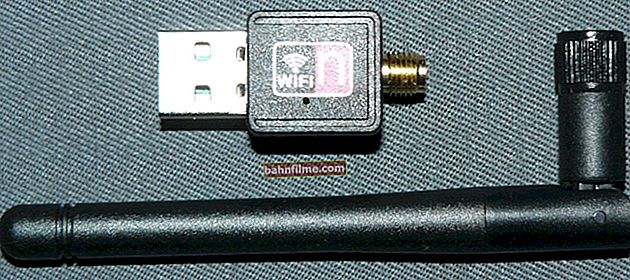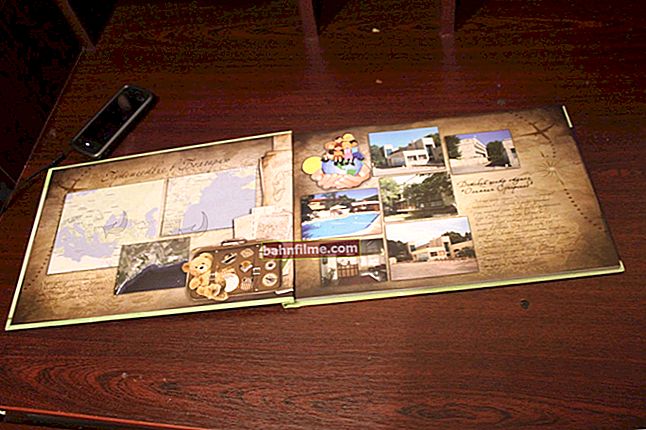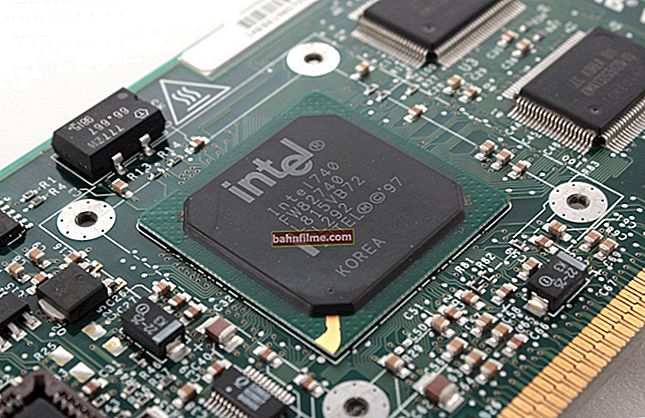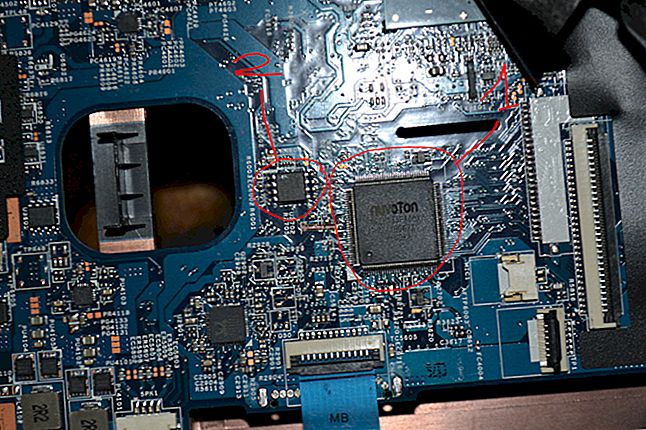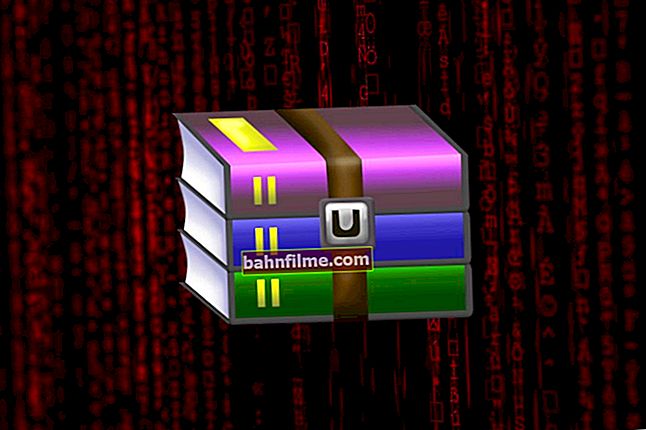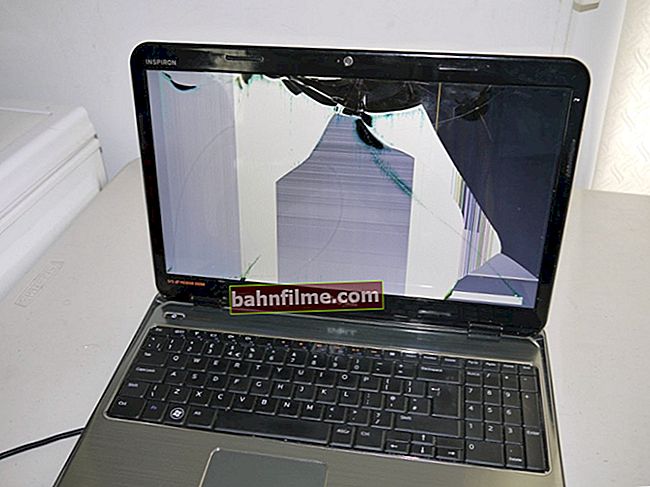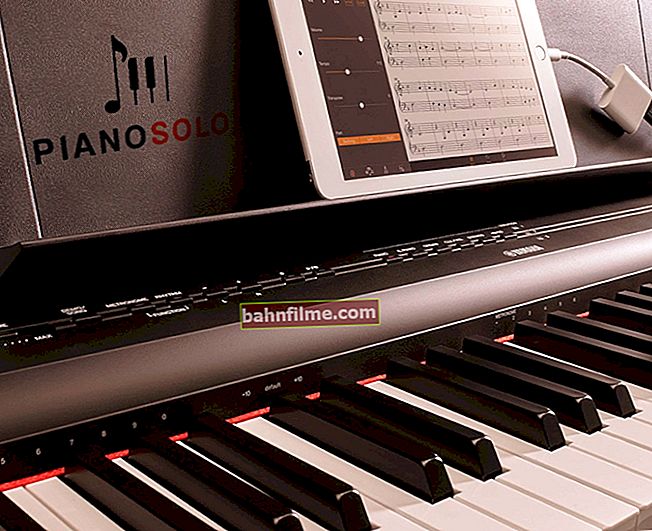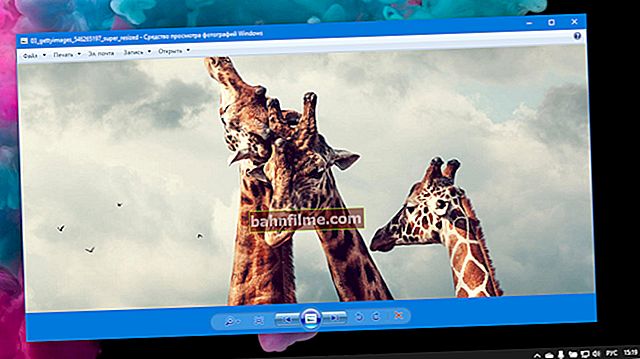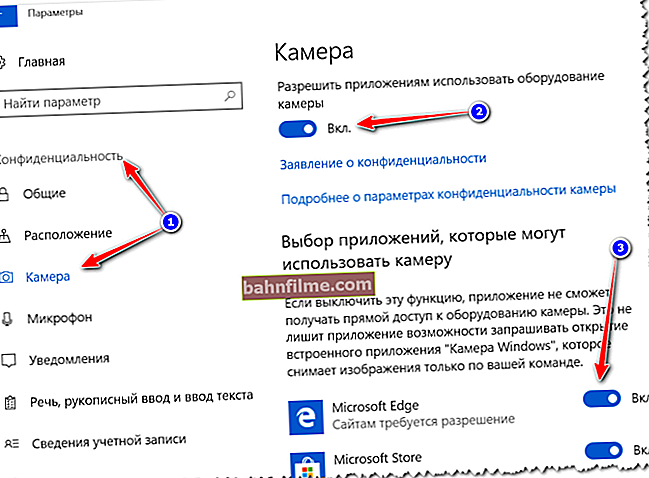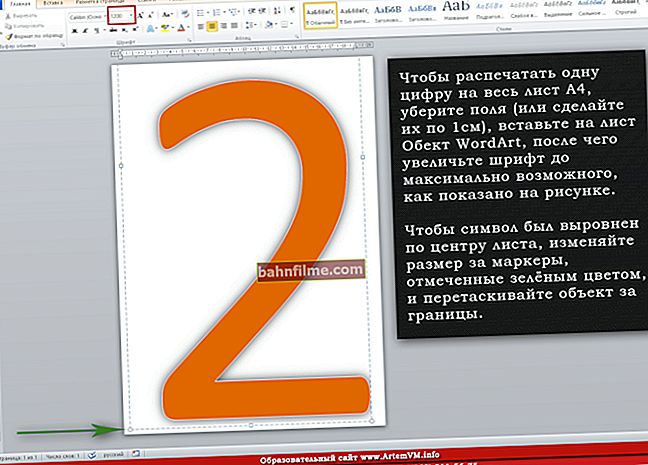
User question
Hello.
Tell me how to password-protect the folder where I have my documents. The folder is on a USB flash drive, but you have to carry it with you and connect it to different PCs and laptops. I would not want anyone to see them or copy them to themselves.
A small addition: the password must be put on the folder, and not on the USB flash drive itself. Those. to view a specific folder - enter the password, and everything else is free and open for viewing. Thank you in advance!
Good day!
The task is quite feasible, below I will give several options on how to put a password on your files (and based on the pros / cons of each method, you can choose the best option for yourself). 👌
One moment!
Some users (especially beginners) set passwords for everything: movies, music, games, etc. As a rule, all these media files that you just downloaded from the network are of little interest to anyone (except you), and it hardly makes sense to protect them (unless you want someone to know that you are interested in them).
At the same time, we have to observe how connivingly they treat passwords, personal personal data, scans of passports, TIN, etc. First of all, it is these documents that need to be protected!
👉 To help!

By the way, I also recommend protecting your phone. On the following link, you will learn how to put a password (pattern) on an Android phone.
*
We put a password
Per file (document, notepad)
The easiest, fastest and most effective way to put a password on your folders and files is to send them to a password-protected (and encrypted) archive. When you need to access files and folders inside the archive, you need to enter a password for access and use them safely.
From the pros: you can protect any files in this way: Word / Excel documents, pictures, text files (notebooks), scans, etc. There are also archivers on any PC / laptop, which means you can open files on any computer!
There are, however, disadvantages: if you forget the password, then it is very difficult to open such an archive (in some cases it is impossible); it is not convenient to work with large files (for example, with a video folder).
Below I will consider how to create such an encrypted archive in the popular archivers 7-Zip and WinRAR.
👉 To help!
WinRAR analogs: free archivers for Windows - the most convenient programs
7-Zip
Site: //7-zip.org.ua/ru/
A very popular archiver that allows you to compress files stronger than its competitors: WinRAR, WinZIP, etc. The archiver is free, convenient and minimalist (there is nothing superfluous). In general, it rightfully occupies a leading position ...
After installing it, in the explorer you will see the menu of the same name: 7-Zip. Now, to create an archive, you just need to right-click on the desired file or folder and select from the menu that appears "Add to archive ..." (see screenshot below).

Add to archive // 7-Zip
Next, there are a number of important parameters that need to be set correctly. I marked them with numbers in the screenshot below and now I will explain in more detail:
- (1) - you need to specify the name of your archive and the location where it will be saved. In general, the name of the archive can be anything, and later it can be renamed, like a regular file;
- (2) - archive format. The best compression is provided by the 7-Zip format, and this is what I recommend choosing;
- (3) - SFX-archive - self-extracting archive. That is, if you check the box next to this item, an EXE file will be created (like a regular program), by running which, you can extract files without using an archiver (a handy thing in order to extract files on any computer, even on those , where there are no archivers at all);
- (4) entering a password - the password can be anything, here the archiver does not set any restrictions.However, remember that passwords like "12345", "God", "Love", etc. associated with your name and date of birth are very easy to crack! Install something more reliable (6-10 characters recommended, with upper and lower case letters, numbers and special characters);
- (5) choice of encryption method - I recommend leaving the default AES-256, and additionally ticking the "Encrypt file names" checkbox. Thanks to this, your files in the archive not only cannot be opened, but even see what the names of the files are hidden in the archive!
- (6) - start archiving.

Create archive // 7-Zip
After the archive is created, you can try to open it. For this action, any archiver (not even 7-Zip) will ask you to enter a password for decryption. If you do not know it or have forgotten it, then your files will remain inaccessible!

Trying to open a password-protected archive
WinRAR
Website: //www.win-rar.com/start.html
One of the most famous archivers providing a good compression ratio. Allows you to open and extract files from all the most popular archive formats: ZIP, RAR, ACE, TAR, GZIP, etc.
To create an archive in WinRAR, just right-click on any file / folder, and in the explorer menu that appears, select "WinRAR / Add to Archive" (note: add to archive).

WinRAR - Add Archive ...
Further it is necessary:
- (1) - set the name for the archive (Archive name), can be anything;
- (2) - select archive format (RAR recommended);
- (3) - select an option "Set Password" (password setting) to encrypt the archive.

Basic settings when creating an archive in WinRAR
Then specify the password itself (line "Enter password" , i.e. password entry) and it is highly advisable to check the box "Encrypt file names" (i.e. encrypt filenames).

Password input - WinRAR
Then you can start archiving. In general, the password-protected archive is ready - you can use it ...
Password protection for Word / Excel documents, etc.
Documents created in Microsoft Office can be encrypted by standard means, without additional programs. It is very convenient when you often need to work with an encrypted document. By the way, pictures can also be placed in such a document ...
To set a password: open the menu FILE / DETAILS ... Then click on the function "Document protection" and select what you want: encrypt using a password (by the way, in addition to this, the document can, for example, be prohibited for editing, access is restricted, etc.).

File / Info // Microsoft Word
Please note that the entered password (if you forget or lose it) is almost impossible to recover! By the way, the office itself is warned about this when it is assigned.

Encrypting a document
After the document is protected by entering the section "INTELLIGENCE" , you will see a key with a padlock icon appear, and a note is written that a password is required to open the file. Actually, that's it, the document is protected!

The document is password protected // Microsoft Word
*
To folder / directory
It is not always convenient to set a password for a specific file. For example, you have a catalog with pictures, personal photos that you often work with (edit old ones, upload new ones, etc.), and which you would not want anyone to see without your permission.
In this case, it is not convenient to create an archive every time, and you have to resort to other tools. About them below ...
Protected Folder
Website: //ru.iobit.com/password-protected-folder.php

Protected Folder - screenshot of the main window
A very handy utility for protecting and hiding your files and folders from outsiders. To protect a folder with a password - just move it to the window (in the "safe") - and everything in it will be reliably protected by your password.
Advantages:
- allows you to protect personal and important information from theft by programs;
- there are several levels of protection;
- very convenient to use: simple drag and drop of the folder - and it is protected!
- completely in Russian;
- compatible with Windows 7/8 / 8.1 / 10 (32/64 bits).
Anvide Seal Folder
Website: //anvidelabs.org/programms/asf/

A very simple and at the same time reliable program for protecting encryption and password protection of any folders: whether they are on a hard disk, flash drive or any other removable media.
Each folder, by the way, can be protected by its own separate password.The program is fully translated into Russian, supported by all popular versions of Windows.
Advantages:
- it is unnecessary to keep it constantly running;
- does not install any specials. drivers to the system;
- simple, intuitive interface - even a completely novice PC user will understand;
- there are hot keys;
- the program is compact and does not take up much disk space;
- free for home use.
I will show with an example how you can easily encrypt and close your folder from prying eyes. Install and run the program. Then add the folder (you can use the Ins key).

Add a folder
Next, click on the lock icon (or the F5 key) - the program will prompt you for a password and lock the folder.

Close access to the folder
Now, even if you close or delete the program, your folder will remain inaccessible (an attempt to enter it (if you remember its name and address) will end with an error, as in the screenshot below).
By the way, the folder is not visible even if you boot into Safe Mode. In general, it is hidden securely!

Folder unavailable
To decrypt the folder and the files in it, you need to run the utility again, click on the icon with the open lock and enter the password.
*
On a USB flash drive
Method number 1
The easiest way to put a password on an entire flash drive (or disk) is to use a feature that already exists in Windows - BitLocker. Allows you to reliably and quickly protect information on a USB flash drive
Note! BitLocker encryption is not available on all versions of Windows. If you have Windows 7 Ultimate or Enterprise, Windows 8 / 8.1 / 10 - most likely you should have it.
To protect the flash drive in this way - connect it to the USB port, open "My computer" (or "This computer") and right-click on it, in the menu that appears, select Enable BitLocker ... Then follow the instructions of the wizard to set the password.

Turn on BitLocker
When the password is set, try to remove the USB flash drive from the USB port, and then reconnect it - you will see that access to it is closed (and its icon has become with a closed lock). Until you enter the password to unlock, the information on the carrier is reliably protected!

Unlocking a disk / flash drive
Method number 2
USB Safeguard
Website: //www.usbsafeguard.com/download.html
A very simple and convenient utility for protecting flash drives (works in all versions of Windows). All you need to put protection on a USB flash drive is to download the utility and copy it to a USB drive (see the screen below).

Action number 1 - copied the program file to the USB flash drive
Next, she will offer to format the media (Important! First copy everything on the USB flash drive to a separate folder on your hard drive) - we agree.
Then you can set a password.

Action number 2 - launched the utility from the flash drive, formatted it and entered the password
EVERYTHING! Now, when you plug in a USB flash drive, it will appear empty (only the USB Safeguard program file will be visible in it).
To see the files on it, you will need to run this file and enter the correct password. If you do this, then a disk will appear Z, equal in size to your flash drive - it is with it that you need to work (and it is on it that all your files added for encryption will be located).
In general, everything is simple, convenient and easy to work!
An analogue of a similar utility: Rohos Mini Drive.
*
👉 ADDITION
You can also create a virtual encrypted disk (something like an image) to connect and view which, you need to enter the correct password. This technology makes your files as safe as possible from outsiders. In addition, absolutely any file type can be stored on such a disk.
Examples of programs: TrueCrypt, CyberSafe, Rohos Disk, etc.
👉 To help!

1) How to create a virtual hard disk, encrypt it and configure auto-connection after Windows restart.
2) How to hide a disk partition (and the data on it will become invisible! 👀).
*
PS: don't forget passwords! Otherwise, make the files so secure that you won't even be able to view them yourself ...
Good luck!
👣
First publication: 17.10.2017
Correction: 01/30/2020
